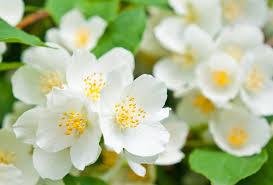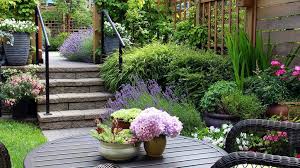A garden filled with vibrant and fragrant flowers can transform any outdoor space into a serene sanctuary. Whether you’re an experienced gardener or just beginning to cultivate your green thumb, choosing the right flowers can make all the difference. This guide explores the best flowers for your garden, focusing on varieties that not only beautify but also fill the air with delightful scents. From classic favorites to exotic blooms, discover how to enhance your garden with these fragrant beauties.
1. Why Fragrant Flowers Matter

1.1 The Benefits of Fragrance in Your Garden
Fragrant flowers offer more than just visual appeal. Their scents can create a relaxing atmosphere, attract beneficial pollinators like bees and butterflies, and even enhance your outdoor living experience. The aroma of flowers can evoke positive emotions and memories, making your garden a more enjoyable and comforting space.
1.2 Choosing the Right Fragrance for Your Garden
When selecting fragrant flowers, consider the scent intensity, bloom time, and how the fragrance will interact with your garden’s overall environment. Some flowers release their scent during the day, while others are more aromatic in the evening. Additionally, think about how the fragrance will complement other plants and outdoor elements.
2. Top Fragrant Flowers for Your Garden
2.1 Roses (Rosa spp.)
2.1.1 Overview
Roses are classic garden favorites known for their stunning blooms and delightful fragrances. They come in various colors, shapes, and sizes, making them versatile for any garden design.
2.1.2 Popular Varieties
- ‘Double Delight’: Known for its strong, spicy fragrance and beautiful red and white flowers.
- ‘Eden’: Offers a classic, sweet rose scent with large, creamy blooms.
2.1.3 Care Tips
Roses thrive in well-drained soil and full sunlight. Regular pruning and pest control are essential to maintain their health and fragrance.
2.2 Lavender (Lavandula spp.)
2.2.1 Overview
Lavender is celebrated for its calming scent and attractive purple spikes. It’s a versatile plant that works well in both formal and informal garden settings.
2.2.2 Popular Varieties
- ‘English Lavender’: Known for its strong, sweet aroma and compact growth.
- ‘French Lavender’: Features a unique fragrance with a slightly more exotic scent.
2.2.3 Care Tips
Lavender prefers well-drained soil and plenty of sunlight. It is drought-tolerant but benefits from occasional watering during dry spells.
2.3 Jasmine (Jasminum spp.)
2.3.1 Overview
Jasmine plants are renowned for their intense, sweet fragrance. They are perfect for adding a touch of elegance to your garden with their delicate, star-shaped flowers.
2.3.2 Popular Varieties
- ‘Arabian Jasmine’: Offers a strong, sweet fragrance and is ideal for climbing trellises.
- ‘Winter Jasmine’: Blooms in late winter with a subtle, fresh scent.
2.3.3 Care Tips
Jasmine needs well-drained soil and ample sunlight. It can be grown as a vine or shrub and requires regular pruning to promote healthy growth and abundant blooms.
2.4 Gardenias (Gardenia jasminoides)
2.4.1 Overview
Gardenias are known for their creamy white flowers and strong, sweet fragrance. They add a touch of elegance and sophistication to any garden.
2.4.2 Popular Varieties
- ‘Mystery’: Offers a strong, floral scent with large, full blooms.
- ‘Radicans’: Features a lower growth habit with fragrant, petite flowers.
2.4.3 Care Tips
Gardenias require acidic, well-drained soil and protection from harsh afternoon sun. Regular watering and occasional fertilizing help maintain their lush foliage and fragrant blooms.
2.5 Lilacs (Syringa vulgaris)
2.5.1 Overview
Lilacs are known for their charming clusters of small flowers and their delightful fragrance. They are a popular choice for creating a classic, fragrant garden.
2.5.2 Popular Varieties
- ‘Common Lilac’: Known for its classic lilac scent and vibrant purple flowers.
- ‘Miss Kim’: Offers a more compact growth and slightly different fragrance profile.
2.5.3 Care Tips
Lilacs prefer well-drained soil and full sun. They are relatively low-maintenance but benefit from occasional pruning to maintain shape and encourage blooming.
2.6 Peonies (Paeonia spp.)
2.6.1 Overview
Peonies are beloved for their large, showy blooms and sweet, subtle fragrance. They are a great addition to any garden looking for a touch of old-fashioned charm.
2.6.2 Popular Varieties
- ‘Sarah Bernhardt’: Features large, pink flowers with a gentle fragrance.
- ‘Festiva Maxima’: Known for its white blooms with a slight, pleasant scent.
2.6.3 Care Tips
Peonies thrive in well-drained soil with plenty of sunlight. They are relatively low-maintenance but may require staking to support their large blooms.
2.7 Sweet Peas (Lathyrus odoratus)
2.7.1 Overview
Sweet peas are popular for their delicate, fragrant flowers and climbing habit. They are ideal for adding a touch of romance and charm to garden trellises and arbors.
2.7.2 Popular Varieties
- ‘Old Spice’: Offers a strong, sweet fragrance and a range of pastel colors.
- ‘Royal Family’: Known for its vibrant colors and excellent scent.
2.7.3 Care Tips
Sweet peas prefer cool weather and well-drained soil. Regular watering and occasional fertilizing help them produce abundant, fragrant blooms.
3. How to Incorporate Fragrant Flowers into Your Garden

3.1 Designing Your Fragrant Garden
To create a fragrant garden, consider planting a mix of flowers that bloom at different times of the year. This ensures a continuous fragrance and visual interest throughout the seasons. Grouping fragrant plants together can also enhance their scents and create a more immersive experience.
3.2 Pairing Fragrant Flowers with Other Plants
Combine fragrant flowers with complementary plants to enhance their scent. For instance, planting lavender alongside roses can create a pleasing contrast of scents. Additionally, consider the height and spread of each plant to ensure they complement each other in your garden design.
3.3 Creating a Fragrance Zone
Designate a specific area of your garden as a fragrance zone. This can be a cozy corner with a bench or seating area where you can relax and enjoy the scents of your flowers. Adding elements like a small fountain or trellis can enhance the ambiance.
4. Conclusion
Incorporating fragrant flowers into your garden not only enhances its beauty but also creates a sensory experience that can be enjoyed year-round. By choosing a variety of blooms with captivating scents, you can design a garden that offers both visual and olfactory pleasure. Whether you prefer the classic charm of roses or the exotic allure of jasmine, there’s a fragrant flower for every garden. Start planning your garden today and enjoy the myriad of scents that these beautiful blooms have to offer.



